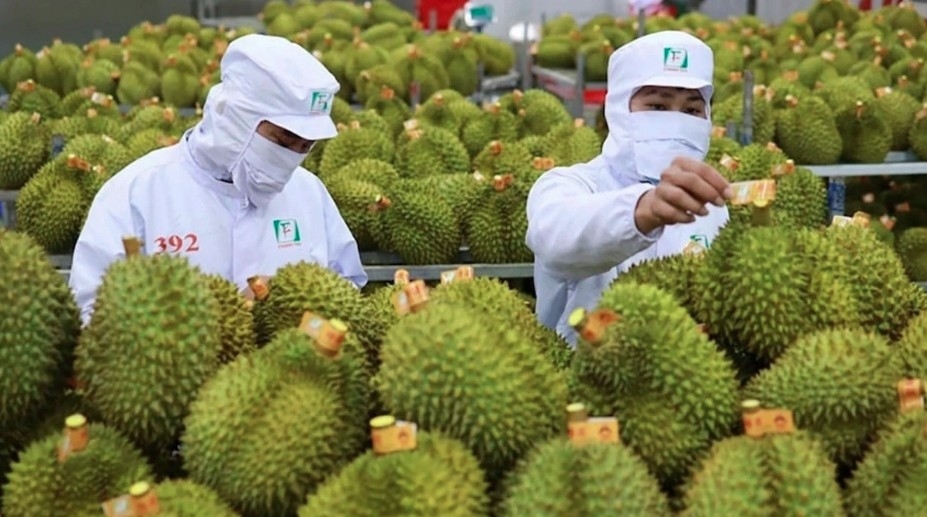First-half economy sees positive growth and stability from fiscal-monetary synergy
VOV.VN - Vietnam’s GDP expanded 7.56% in the first half of 2025, with Q2 growth reaching 7.67% despite numerous difficulties and challenges, showing targeted fiscal policy, controlled inflation and a continued trade surplus.

In practice, the expansionary fiscal policy, designed with clear priorities, passed by the National Assembly and implemented by the Government, has played a vital stabilizing role for both businesses and the broader economy. In 2024 and the first half of 2025, the Government has continued to roll out measures such as tax, fee and land rent exemptions, reductions and deferrals. These include reduced environmental protection tax on fuels and lubricants, and reduced registration fees for domestically manufactured and assembled automobiles. Notably, the 2% value-added tax (VAT) cut for select goods and services, originally scheduled for the first half of 2025, has been extended through the end of 2026.
“Initially, the VAT reduction policy applied to just the first half of 2025. However, the Government has carefully assessed the situation and decided to extend it through 2026, as many businesses are still facing difficulties. VAT reductions directly benefit both consumers and producers, including import–export enterprises. That’s why the Government concluded it was necessary to continue the policy,” said Minister of Finance Nguyen Van Thang.
It is estimated that total fiscal support in the first half of the year reached nearly VND 107 trillion. Of this, approximately VND 49 trillion in tax and fee exemptions helped stimulate production, consumption and job creation. Another VND 58 trillion in deferred tax and land rent payments served as a form of interest-free credit, providing liquidity akin to a stable source of state-backed financing, which enabled enterprises to boost productivity and reduce costs in the context of persistently high commercial interest rates.
According to economist Can Van Luc, a member of the National Advisory Council on Financial and Monetary Policies, the Prime Minister has directed fiscal policy in 2025 to remain expansionary but targeted, focusing on continued tax deferrals and reductions for key sectors. Close coordination with monetary policy is essential to both stimulate growth and maintain macroeconomic stability while containing inflation. He emphasized the importance of cooperation between the Ministry of Finance and the State Bank of Vietnam in managing prices, particularly of essential goods since inflation driven by cost-push factors is just as critical as inflation caused by monetary dynamics.
Commenting on the implementation of proactive, flexible fiscal policy, economist Vo Tri Thanh, Director of the Institute for Brand and Competitiveness Strategy, observed: “At present, Vietnam enjoys a relatively strong fiscal position. The annual budget deficit remains within a manageable range, and public debt is well below the ceiling approved by the National Assembly. In supporting enterprises and boosting demand, many experts call for strong coordination between fiscal and monetary policies, but note that fiscal policy should carry more weight at this time. That’s because the room for monetary policy remains limited, due to inflationary pressures, exchange rate volatility, global uncertainty, particularly US policy shifts as well as domestic challenges.”

Although the fiscal policy is currently seen as the main driver supporting the economy, monetary policy remains equally vital. As of June 26, total outstanding credit in the banking system reached nearly VND 17 quadrillion, up 8.3% from the end of 2024, and nearly 19% higher year-on-year. This represents the highest credit growth rate since 2023. While the Ministry of Finance has allocated 3% of the national budget for science and technology as part of a breakthrough development policy, the banking sector has also stepped up efforts to expand credit access in this field.
“We’ve launched a range of credit programs to support investment in priority sectors, including green projects and sustainable agriculture. We’ve also scaled up lending for environmental protection initiatives and offered preferential credit packages for individual clients. These programs range in size from VND30 trillion to VND50 trillion and feature interest rate reductions of 0.5 to 1.5 percentage points compared to standard lending rates. In the first quarter of 2025 alone, Agribank remained the leading lender in green credit, serving over 41,600 clients with a total outstanding balance of nearly VND 29.3 trillion,” said Doan Ngoc Luu, Deputy General Director of Agribank.
Pham Nhu Anh, CEO of Military Commercial Joint Stock Bank (MB), noted that the State Bank of Vietnam is developing its largest-ever credit package valued at VND 500 trillion (equivalent to nearly US$20 billion) to finance infrastructure and digital transformation projects. In April, the four largest state-owned commercial banks each registered to contribute VND 60 trillion. Twelve large private banks signed up for VND 20 trillion each, and five smaller commercial banks pledged around VND 4 trillion per institution.
“MB has registered to contribute VND 20 trillion under the State Bank’s umbrella package, which includes a 1% interest rate reduction. While VND 500 trillion may be significant for any one bank, it’s not a game-changer at the system level. With the total outstanding credit nearing VND 18 quadrillion, this package won’t radically alter short-term lending. But it does channel long-term credit into infrastructure and technology while preserving the system’s safety indicators,” Pham Nhu Anh said.
Overall, fiscal and monetary policies have both been carried out flexibly and proactively to support businesses and the broader economy. Their close coordination has helped preserve macroeconomic stability, contain inflation, and lay a solid foundation for economic growth. These efforts are clearly reflected in actual performance as state budget revenue in the first half of 2025 is estimated at over VND 1.302 quadrillion, equivalent to 66% of the full-year target and up 25% year-on-year. This underscores the role of fiscal and monetary policy as key pillars of economic growth, working in tandem to unlock new drivers while revitalizing existing ones, thereby contributing to higher and more sustainable growth.




